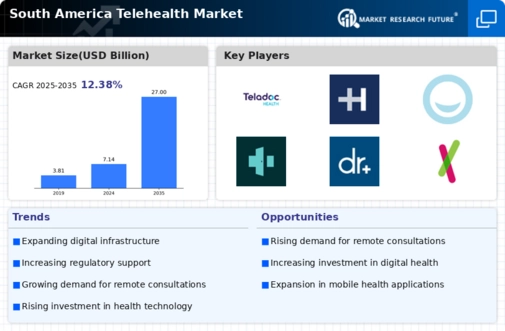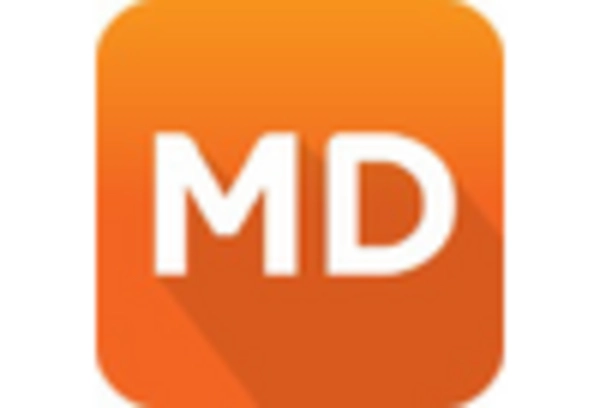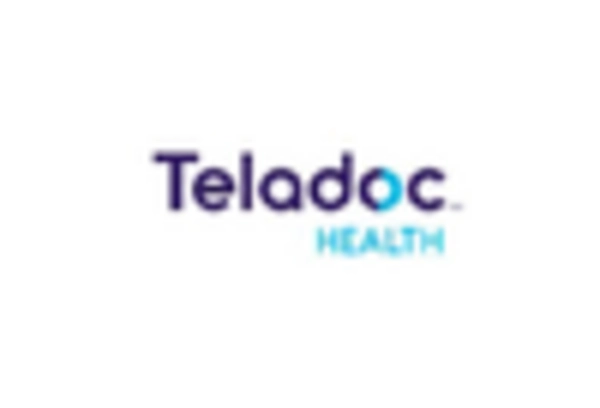Increased Focus on Preventive Care
The telehealth market in South America is witnessing a shift towards preventive care, which is reshaping healthcare delivery. As awareness of health issues grows, patients are increasingly seeking proactive measures to maintain their well-being. Telehealth services facilitate regular check-ups, health monitoring, and educational resources, empowering patients to take charge of their health. This focus on prevention aligns with public health initiatives aimed at reducing the incidence of chronic diseases. The telehealth market is thus likely to benefit from this trend, as healthcare providers integrate preventive care strategies into their telehealth offerings, ultimately improving population health outcomes.
Rising Demand for Accessible Healthcare
The telehealth market in South America experiences a notable surge in demand for accessible healthcare services. This trend is driven by the increasing prevalence of chronic diseases and the need for continuous patient monitoring. As of 2025, approximately 30% of the population in South America suffers from chronic conditions, necessitating innovative healthcare solutions. Telehealth services provide a viable alternative, allowing patients to receive care from the comfort of their homes. This shift not only enhances patient satisfaction but also reduces the burden on traditional healthcare facilities. The telehealth market is thus positioned to grow significantly, as more healthcare providers recognize the potential of remote consultations and monitoring to improve health outcomes.
Cost-Effectiveness of Telehealth Solutions
The cost-effectiveness of telehealth solutions significantly influences the telehealth market in South America. With rising healthcare costs, both patients and providers are seeking more affordable alternatives. Telehealth services can reduce expenses related to travel, facility overhead, and time off work. Studies indicate that telehealth consultations can save patients up to 50% compared to traditional in-person visits. This financial incentive encourages more patients to utilize telehealth services, thereby driving growth in the telehealth market. As healthcare systems continue to prioritize cost containment, the demand for telehealth solutions is expected to rise, further solidifying its role in the healthcare landscape.
Technological Advancements in Communication
Technological advancements play a crucial role in shaping the telehealth market in South America. The proliferation of smartphones and high-speed internet access has facilitated the adoption of telehealth services. As of 2025, over 70% of the South American population owns a smartphone, enabling them to access telehealth platforms easily. Furthermore, innovations in video conferencing and mobile health applications enhance the quality of virtual consultations. These technologies not only improve patient engagement but also streamline communication between healthcare providers and patients. Consequently, the telehealth market is likely to expand as more individuals embrace these technological solutions for their healthcare needs.
Supportive Policy Environment for Telehealth
A supportive policy environment is emerging as a key driver for the telehealth market in South America. Governments are recognizing the importance of telehealth in enhancing healthcare access and efficiency. Recent policy changes have aimed to streamline regulations and promote the integration of telehealth services into existing healthcare frameworks. For instance, reimbursement policies are evolving to include telehealth consultations, making them more financially viable for providers. This regulatory support is expected to foster innovation and investment in the telehealth market, encouraging more healthcare organizations to adopt telehealth solutions and expand their service offerings.


















Leave a Comment